
210-0000025 rev04
TAM1500-12
12-Port T1 Access Multiplexer
INSTALLATION
1. Unpack and inspect the TAM1500-12.
If there is visible damage, do not attempt to connect the device; contact Customer Support at 1-
877-638-2638 (001-603-427-0600 for international customers) or Support@NetToNet.com.
2. Install the TAM1500-12 in an IP DSLAM chassis.
All Access Multiplexer Modules for Net to Net Technologies' IP DSLAMs are hot swappable;
installing or removing an Access Module while the chassis is powered up does not affect the
operational status of other Access Modules within the chassis. The IPD12000 is a fourteen slot
chassis; slots 1-12 are reserved for Access Modules (such as the TAM1500-12) and slots 13-14
are reserved for Multiplexer Uplink Modules (such as the MUM200-2). Access Modules may be
placed in any order in slots 1-12. The IPD4000 is a five slot chassis; slots 1-4 are reserved for
Access Modules and slot 5 is reserved for a Multiplexer Uplink Module.
a. Align the TAM1500-12 with the slot module guides of the chosen slot for installation (slot
1-12 on the IPD12000 or slot 1-4 on the IPD4000).
b. Slide the TAM1500-12 firmly into the chassis. DO NOT USE EXCESS FORCE.
c. Secure the TAM1500-12 by tightening the fastening screws on the module faceplate.
d. Verify that the PWR (Power) LED on the TAM1500-12 faceplate is illuminated.
Interface Module User Guide
CAUTION Net to Net Technologies strongly recommends the use of proper electrostatic discharge (ESD) precautions
when handling this equipment.
NOTE There must be a Multiplexer Uplink Module installed in the IP DSLAM chassis in order for Access Modules to
operate.

210-0000025 rev04
3. Connect the T1 Line(s).
Plug the T1 cable into the RJ21 connector for the chosen slot on the back of the IP DSLAM. The
TAM1500-12 will connect with remote T1 modems at distances up to 6,000 feet before
requiring a T1 repeater. For each port being connected to a remote T1 modem, verify that the T1
link has been established; the T1 LK LED for that port will show steady illumination to indicate
the connection has been made. Link up should occur within 20 seconds depending on the
quality, gauge and distance of the copper cables. Default bandwidth for the TAM1500-12 is
1,536 kbps.
T1 RJ21 Connector Port Pinout
OVERVIEW
TAM1500-12 Management
Statistical and configuration data for the TAM1500-12 are maintained in an embedded web
server that resides within the firmware of Net to Net Technologies' Multiplexer Uplink Modules
(MUMs). This firmware contains Net to Net's Network Management System (NMS) and Simple
Network Management Protocol (SNMP).
Accessing TAM1500-12 data in a newly installed IP DSLAM
a. Connect your PC to the Ethernet RJ45 MGMT port located on the faceplate of the
MUM installed in your IP DSLAM.
b. Verify the connection; solid illumination of the MGMT LNK LED on the MUM
faceplate indicates the connection has been established.
c. Launch a web browser such as Microsoft Internet Explorer (v4.0 or higher) or
Netscape Navigator (v4.0 or higher).
d. Type the default IP address into the address field at the top of your browser and
press the Enter key.
PORT 1 2 3 4 5 6 7 8 9 10 11 12
RX Tip 26 27 28 29 30 31 32 33 34 35 36 37
RX Ring 1 2 3 4 5 6 7 8 9 10 11 12
TX Tip 39 40 41 42 43 44 45 46 47 48 49 50
TX Ring 14 15 16 17 18 19 20 21 22 23 24 25
(Pins 13 and 38 are not used)
NOTE Once the TAM1500-12 has been installed, all settings are software selectable via Net to Net Technologies' Network
Management System (NMS). For further information regarding TAM1500-12 configuration and management please
refer to the Circuit Configuration section further on in this manual and/or to the Management User Guide for IP and
Mini DSLAMs.

210-0000025 rev04
!192.168.254.252 if the MUM is in slot 13 (IPD12000) or slot 5 (IPD4000)
!192.168.254.253 if the MUM is in slot 14 (IPD12000)
e. Log in with a default username and password (both of which are case sensitive).
Please note that General Users have "read only" access; for NMS configuration you
must log in as a Superuser.
!general / Password
!superuser / Password
Accessing TAM1500-12 data in a previously installed IP DSLAM
a. Establish a connection with the MUM either directly (through the Ethernet RJ45
MGMT port on the MUM faceplate) or, if the system has been so configured, from a
PC on your network.
b. For direct connections verify that the MGMT LNK LED on the MUM faceplate is
illuminated indicating the connection has been established.
c. Launch a web browser such as Microsoft Internet Explorer (v4.0 or higher) or
Netscape Navigator (v4.0 or higher).
d. Enter the assigned IP address* into the address field at the top of your browser
window. Press the Enter key.
e. Log in with your assigned username and password.* Please note that General Users
have "read only" access; for NMS configuration you must log in as a Superuser.
*If the IP address, username or password is unknown, contact your System Administrator
or Information Technology Manager.
Default Settings
No configuration is necessary for the TAM1500-12 to operate at default settings. If however, a
change is required, default settings can easily be modified within NMS. For information
regarding specific parameter configurations, refer to the TAM1500-12 Circuit Configuration
section on the following page and/or the Management User Guide for IP and Mini DSLAMs.
Management Password Administration Defaults*
NOTE Once accessed initially, the management system within the MUM can be configured such that NMS
and SNMP can be reached from any computer on your network. For further instruction please refer
to the Management User Guide for IP and Mini DSLAMs.
General Username: general
General Password: Password
Super Username: superuser
Super Password: Password
*Usernames and passwords are case sensitive.

210-0000025 rev04
Management System Configuration Defaults
TAM1500-12 Circuit Defaults
Data Storage
Configuration backup is inherent in the TAM1500-12. Upon initial power up of the IP DSLAM,
the default parameters of the TAM1500-12 will remain in place unless changed through NMS.
Once changed, new configurations will automatically be recorded in the Random Access
Memory (RAM) of the TAM1500-12 and the Non-Volatile Random Access Memory (NVRAM) of
the MUM. While data stored in TAM1500-12 RAM will be erased if the unit loses power, data
stored within MUM NVRAM will remain intact (even if the unit loses power) unless deliberately
cleared or reconfigured.
TAM1500-12 CIRCUIT CONFIGURATION
Circuit configurations common to all Access Module models are defined in the Management User
Guide for IP and Mini DSLAMs. Circuit configurations specific to T1 technology are outlined below.
Default settings for any of these may be altered via the Circuit Configuration window of Net to Net's
Network Management System (NMS).
Speed
There are eight timeslot/bandwidth options for the T1 link; default is 1,536 kbps across all 24
channels. Remote T1 modems determine line speed through their communication with the
TAM1500-12.
TAM1500-12 Timeslot & Bandwidth Options
IP Addresses:
IPD12000 slot 13 192.168.254.252
IPD12000 slot 14 192.168.254.253
IPD4000 slot 5 192.168.254.252
Subnet Mask: 255.255.255.0
Default Gateway: 0.0.0.0
In-band Management: disabled
Uplink VLAN ID: 0
Circ. ID: n/a
IP Range 1: 0.0.0.0 - 255.255.255.255
IP Range 2: 0.0.0.0 - 0.0.0.0
Speed: 1,536 kbps
Protocol: ALL
Backbone-VLAN: 0
VLAN: 0 - 0
Pri [Priority]: 0
Flood: Upl [Uplink]
Frame Type: ESF [Extended Super Frame]
Line Code: B8ZS [Bipolar with 8 Zero Substitution]
Tx Buildout: 0dB [decibels]
Clock Source: Local
Timeslots 1-3 1-6 1-9 1-12 1-15 1-18 1-21 1-24
Bandwidth (kbps) 192 384 576 768 960 1,152 1,344 1,536

210-0000025 rev04
Frame Type
Frame type is the T1 data encapsulation method. A frame consists of 193 bits (8-bit samples of
each of the 24 T1 channels plus a synchronization bit) transmitted at a rate of 8,000 frames per
second (1,544 kbps) across the T1 line.
Super Frame
Super Frame (SF) format assembles data into 12-frame transmission clusters.
Extended Super Frame (Default)
Extended Super Frame (ESF) format, used in Wide Area Networks (WANs), assembles data
into 24-frame transmission clusters and integrates the following:
!Facilities Data Link (FDL) - communication support through in-service monitoring
and diagnostics
!Cyclic Redundancy Check (CRC) - detects line errors and scrutinizes data integrity
Line Code
Line code is the T1 mode of transmission. The following line code options fall within the
International Telecommunication Union - Telecommunication Standardization Sector (ITU-T)
G.703 Standards for Transmission Facilities.
Bipolar with 8 Zero Substitution (Default)
Bipolar with 8 Zero Substitution (B8ZS) is used to accomodate the minimum ones density
requirement in the North American public network. B8ZS line coding helps prevent loss
of synchronization between the TAM1500-12 and remote T1 modems by using bipolar
violations to guarantee there will always be pulses in the line.
Alternate Mark Inversion
The Alternate Mark Inversion (AMI) mode of transmission simply alternates positive and
negative pulses. It is typical, with AMI, for a link to encounter long strings of zeros which
can potentially cause loss of synchronization between remote units. Net to Net
Technologies' products however, meet the North American minimum ones density
requirement internally such that, even with AMI, loss of synchronization is prevented
between the TAM1500-12 and remote T1 modems as it is with B8ZS line coding.
Tx (Transmit) Buildout
Shorter distances between the TAM1500-12 and remote modems require increasing line
attenuation in order to prevent the T1 signal from becoming too strong for the repeaters,
switches and other T1 transmission equiment that may be encountered along the line. Increased
line attenuation translates into decreased transmit amplitude of the T1 signal.
NOTE Although all 24 channels continually run at 1,536 kbps, the Timeslot configuration for each port determines
how many of the channels will be receiving data for that port. Ports configured to operate as fractional T1
lines require contiguous timeslots, as indicated in the table above.

210-0000025 rev04
0db (Default)
Receivers on most newer T1 equipment (repeaters, switches, etc.) can automatically adjust
for incoming amplitude, allowing them to run at zero attenuation regardless of distance.
-7.5db, -15db or -22db
Some older T1 equipment (repeaters, switches, etc.) cannot automatically adjust for
incoming amplitude, in which case, it may be necessary to set attenuation manually
(through NMS) from the choices above.
Timing
Local (Default)
The transmit clock source will originate from an oscillator onboard the TAM1500-12.
Loop
The transmit clock source will originate from the remote T1 modem.
ADDITIONAL INFORMATION
LED Indicators
LED State Indication Additional Information
PWR (Power) solid green unit is operational If the Power LED is not illuminated, it is
unlikely the TAM1500-12 is receiving power
and none of the LEDs will be illuminated.
T1 LK (Link) solid green T1 connection is established A T1 link exists and the port may be
transmitting data but it is not receiving any
packets from the remote T1 modem.
pulsing
green T1 connection is established and
active The port is receiving valid data or status
packets from the remote T1 modem.
no
illumination Red Alarm
The incoming connection to the port
has been lost; no data is being
received.
If the outgoing connection from the port
has also been lost then the remote T1
modem will be in Red Alarm as well.
T1 RX
(Receiving) flashing
amber T1 activity The port is either receiving data from the
remote T1 modem or statistical packets
from the IP DSLAM management.
solid amber heavy Rx traffic The port is receiving large amounts of data
from the remote T1 modem.
no
illumination no activity A link may exist but the port is not
receiving any data from the remote T1
modem.

210-0000025 rev04
(A pulsing LED blinks steadily at a rate of once per second. A flashing LED blinks at a more
rapid, less constant rate.)
Regulatory Compliance
FCC Regulatory Compliance Information for Class A Equipment
Note: This equipment has been tested and found to comply with the limits for a Class A digital device,
pursuant to part 15 of the FCC Rules. These limits are designed to provide reasonable protection against
harmful interference when the equipment is operated in a commercial environment. This equipment
generates, uses and can radiate radio frequency energy and, if not installed and used in accordance with
the instruction manual, may cause harmful interference to radio communications. Operation of this
equipment in a residential area is likely to cause harmful interference in which case the user will be
required to correct the interference at his own expense.
Caution: Changes or modifications not expressly approved by the manufacturer could void the user’s
authority to operate the equipment.
FCC Regulatory Compliance Information for T1 Equipment
Note: This equipment complies with Part 68 of the FCC rules and bears a label that contains the FCC
registration number. This information must be provided to the telephone company if requested. This
equipment should be connected to the telephone network or premise wiring using compatible modular
plugs and cabling in compliance with the requirements of Part 68 of the FCC rules, using the following
standard jack types: (1) RJ-48H: TNE1500-P-12-XX, TAM1500-12 or (2) RJ-48C: TNE1500-X, UIM-T1.
In the unlikely event that this equipment harms the telephone network, the telephone company can
temporarily disconnect your service. The telephone company will try to warn you in advance of any
such disconnection, but if advance notice isn’t practical, it may disconnect the service first and notify
you as soon as possible thereafter. In the event such a disconnection is deemed necessary, you will be
advised of your right to file a complaint with the FCC. Additionally, the telephone company may, from
time to time, make changes in its facilities, equipment, or operations that could affect the operation of
this equipment. If this occurs, the telephone company is required to provide you with advance notice so
you can make the modifications necessary to maintain uninterrupted service.
T1 TX
(Transmitting) flashing
amber T1 activity The port is transmitting data to the remote
T1 modem.
solid amber heavy Tx traffic The port is transmitting large amounts of
data to the remote T1 modem.
no
illumination no activity A link may exist but the port is not
transmitting any data to the remote T1
modem.
T1 AL (Alarm) no
illumination T1 is operational Note: If the T1 LK LED also remains unlit
then the port is in Red Alarm.
solid amber Yellow Alarm
The outgoing connection from the
port has been lost; no data is being
transmitted.
The remote T1 modem has lost its
incoming connection and is in Red Alarm.
pulsing
amber Blue Alarm
An indirect connection has been lost;
the port may no longer be receiving
data from the remote T1 modem.
The remote T1 modem has lost a
connection with an intermediate device and
is in Red or Yellow Alarm.

210-0000025 rev04
Caution: This unit does not contain any user serviceable parts. Repair service and/or warranty
information may be obtained by contacting Customer Support at Net to Net Technologies, Inc.:
112 Corporate Drive, Suite 1, Portsmouth, NH 03801
(603) 427-0600 / (877) 638-2638, [email protected] / www.nettonet.com
Industry Canada Regulatory Compliance Information for Class A Equipment
This Class A digital apparatus complies with Canadian ICES-003.
Cet appareil numérique de la Classe A est conforme à la norme NMB-003 du Canada.
Industry Canada Regulatory Compliance Information for T1 Equipment
Notice: The Industry Canada label identifies certified equipment. This certification means that the
equipment meets telecommunications network protective, operational, and safety requirements as
prescribed in the appropriate Terminal Equipment Technical Requirements documents. The department
does not guarantee the equipment will operate to the user's satisfaction.
Before installing this equipment, users should ensure that it is permissible to be connected to the
facilities of the local telecommunications company. The equipment must also be installed using an
acceptable method of connection. The customer should be aware that compliance with the above
conditions may not prevent degradation of service in some situations.
Repairs to certified equipment should be coordinated by a representative designated by the supplier.
Any repairs or alterations made by the user to this equipment, or equipment malfunctions, may give the
telecommunications company cause to request the user to disconnect the equipment.
Users should ensure for their own protection that the electrical ground connections of the power utility,
telephone lines and internal metallic water pipe system, if present, are connected together. This
precaution may be particularly important in rural areas. Caution: Users should not attempt to make such
connections themselves, but should contact the appropriate electric inspection authority, or electrician,
as appropriate.
210-0000025 rev04
© Copyright 2001 Net to Net Technologies, Inc.
™ The Net to Net Logo is a trademark of Net to Net Technologies, Inc.
Worldwide Headquarters
Net to Net Technologies
112 Corporate Drive, Suite 1
Portsmouth, NH 03801
USA
+1 877-638-2638
http://www.NetToNet.com/
Net to Net Technologies
Victoria House 19 Park Way
Newbury Berkshire RG14 1EE
UK
+44 (0) 1635 570950
-
 1
1
-
 2
2
-
 3
3
-
 4
4
-
 5
5
-
 6
6
-
 7
7
-
 8
8
Net to Net Technologies 12-Port User manual
- Type
- User manual
- This manual is also suitable for
Ask a question and I''ll find the answer in the document
Finding information in a document is now easier with AI
Related papers
Other documents
-
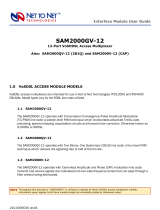 Paradyne SAM2000GV-12 User manual
Paradyne SAM2000GV-12 User manual
-
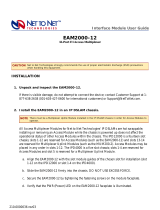 Paradyne 12-Port User manual
Paradyne 12-Port User manual
-
 Paradyne SAM2000G-12 User manual
Paradyne SAM2000G-12 User manual
-
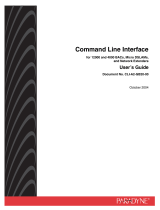 Paradyne 4000 Command Line Interface Manual
Paradyne 4000 Command Line Interface Manual
-
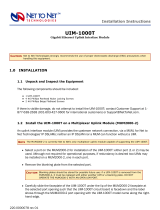 Paradyne UIM-1000T User manual
Paradyne UIM-1000T User manual
-
Hytera HR1062 User manual
-
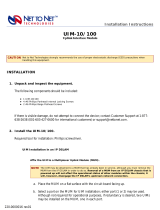 Paradyne UIM-10/100 User manual
Paradyne UIM-10/100 User manual
-
 Paradyne 4000 User manual
Paradyne 4000 User manual
-
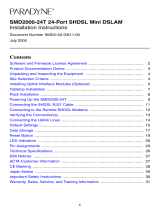 Paradyne 24-Port User manual
Paradyne 24-Port User manual
-
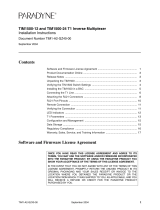 Paradyne TIM1500-12 Installation Instructions Manual
Paradyne TIM1500-12 Installation Instructions Manual



















